I also made another piece using stitching and gathering to provide a resist against the dye. This time I used a sewing machine to stitch parallel lines before tightly gathering the fabric. As with other piece, when I use this method again I will hand stitch, removing the machine stitching from gathered material was a real pain.
This piece was dyed at the same time as the “circles” shibori, again I removed the stitching while it was still wet. This is the result:
As you can see my stitching was less straight towards the bottom but I think the effect is still lovely.
This piece also became a book cover, first I stitched a couple of pleats into the fabric to add extra texture to the final fabric.
Then I laid out white merino top along the pale purple lines to maintain the contrast.
Before laying out 2 layers of merino top.
Here it is after felting, with the pleats giving added texture.
And the final product – an A4 book cover:

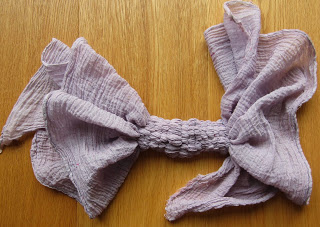
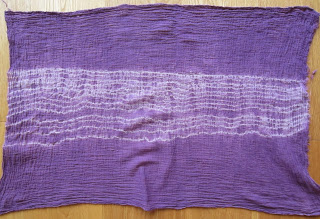
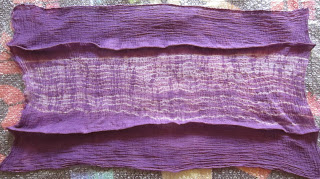
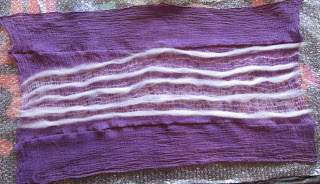
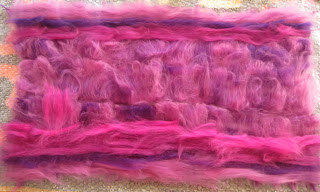
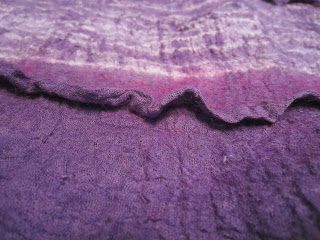
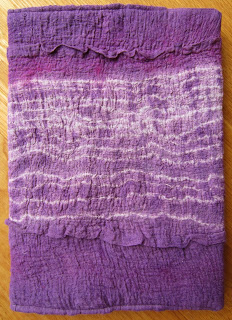
Hope you receive comments for older posts–is the fabric you started with cotton, or another fiber (like silk)? I've recently started wet felting and am trying to learn about it from blogs and videos on youtube mostly.
Hope you receive comments for older posts–is the fabric you started with cotton, or another fiber (like silk)? I've recently started wet felting and am trying to learn about it from blogs and videos on youtube mostly.
Hi Laura, welcome to the felting fraternity, it is such a lovely and versatile material to work with, I'm sure you will have a lot of fun experimenting. There is a wealth of information about felting on the internet, that is where my journey started too but if you can get onto a course with someone whose work you admire you will learn some new techniques and how to feel when the felt is ready for different applications. This was something I found could not be learned from the internet.
The fabric used in the piece above was cotton muslin (sometimes called cheesecloth) both this, cotton scrim (has a much looser weave) and silk chiffon are great fabrics if you are just starting to laminate felt with fabrics. Other fabrics that laminate well are silk ponge / lightweight silk and organza but they can be a little more challenging. As a general rule almost any fabric that you blow through and can feel your breath on your hand on the other side has felting potential, natural fibres tend to be easier to felt than synthetics.
Good luck and let us know how you get on (feel free to post a link here).
Hi Laura, welcome to the felting fraternity, it is such a lovely and versatile material to work with, I'm sure you will have a lot of fun experimenting. There is a wealth of information about felting on the internet, that is where my journey started too but if you can get onto a course with someone whose work you admire you will learn some new techniques and how to feel when the felt is ready for different applications. This was something I found could not be learned from the internet.
The fabric used in the piece above was cotton muslin (sometimes called cheesecloth) both this, cotton scrim (has a much looser weave) and silk chiffon are great fabrics if you are just starting to laminate felt with fabrics. Other fabrics that laminate well are silk ponge / lightweight silk and organza but they can be a little more challenging. As a general rule almost any fabric that you blow through and can feel your breath on your hand on the other side has felting potential, natural fibres tend to be easier to felt than synthetics.
Good luck and let us know how you get on (feel free to post a link here).